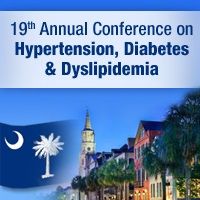Lipid Management: Guidelines vs. Judgement
Lipid management is a complex issue. Peter Jones, MD, a Houston, TX, internist who specializes in lipidology, offers advice to primary care physicians trying to sort out competing treatment guidelines.

Sorting out lipid guidelines can be a challenge for primary care physicians treating patients who are at risk of atherosclerotic cardiovascular disease (ASCVD).
Recent guidelines have been issues by the American Heart Association/American College of Cardiology, the European Society of Cardiology/European Atherosclerosis Society, the Canadian Cardiovascular Society, the International Atherosclerosis Society, the National Lipid Association, and the American Association of Clinical Endocrinologists.
Speaking at the 19th Annual Conference on Hypertension, Diabetes and Dyslipidemia in Charleston, SC, Peter Jones, MD, associate professor at the Methodist DeBakey Heart and Vascular Center at Baylor College of Medicine, Houston, TX said the American College of Cardiology/ American Heart Association guidelines share some similarities with the National Lipid Association recommendations.
“I believe the NLA has provided a comprehensive, scientific, evidence-based recommendation to assist clinical judgment for individual patient care,” Jones said.
But guidelines aren’t everything, he cautioned. “They are based on evidence from randomized clinical trials that are limited by the trial design,” he said.
Further, they make population-based recommendations which need interpretation
.
“We don’t treat populations, we treat individual patients,” agreed Jan Basile, MD, professor of Medicine at the Seinsheimer Cardiovascular Health Program at the Medical University of South Carolina, Charleston, SC.
Both sets of guidelines agree that risk assessment is the first priority, Jones said, and that lifestyle therapy, when patients are willing and able to comply is effective.
But the issues surrounding statins can get more complex.
“There is no data to support statin initiation in stage 4 chronic kidney disease, or in late stage heart failure,” he said.
The ACC/AHA guidelines zero in on statin-benefit groups, and help physicians decide which statins to use and at what doses.
Lipid measurements can be useful in follow up to see if patients are complying.
High intensity statins are better for patients who already have ASCVD and moderate intensity statins are better for patients over age 75, or if they are not candidates for high-intensity therapy.
When patients have primary elevations of LDL cholesterol, greater thatn 190 mg/dL, high intensity statins are preferred, he said, or moderate statins if the patient is not a candidate for higher intensity statins.
In diabetic patients ages 40 to 75, and LDL of 70-189 mg/dL without ASCVD, moderate is okay if their 10-year-risk is less than 7.5% but high-intensity if that risk is greater.
To assess that risk, he said, consider still more factors.
Those included a family history of premature ASCVD, and coronary artery calcium score of greater than 300 Agatston units.
An ankle —brachial index of less than 0.9 is another sign of risk, as is a measurement of high-sensitivity C-reactive protein greater than 2 mg./L.
The NLA guidelines add some additional markers.
Patients face increased risk of ASCVD if they have chronic kidney disease at stage 3b (moderate) or 4 (severe).
Metabolic syndrome also adds to risk, as the Lp(a) of greater than mg/dL.
Another thing to watch for is an albumin creatinine ratio of greater than 30 mg/g.
The NLA recommendations set steps to assessing risks.
“If very high risk, begin with high-intensity statin” the NLA steps say, “for high risk, consider the intensity of the sati, whether moderate of high.”
And in remaining patients, “count the number of major risk factors: greater than 3 moves a patient to high risk, and 2 is moderate risk.”
Though many experts presenting at the conference agreed that statins are a major health advance, there are some patients who do not tolerate them. Usually that means side effects of muscle pain.
For these patients, or if treatment goals are not reached with statins—then what?
Three basic pharmaceutical options are available, Jones said.
Ezetimibe (Zetia/Merck) is a safe non-statin that can work in patients who have recovered from an MI, and some patients with elevated non-HDL-C, LDC-C or both.
Meta-analyses of fibrate therapy in patients with atherogenic dyslipidemia appear to show ASCVD risk reduction.
Even as physicians attempt to absorb the various recommendations and temper them with their own knowledge-based practices, more guidelines are on the way, Jones said.
The NLA is due to issue dyslipidemia guidelines to be used in patient-centered management. Those will include recommendations on patients with HIV, immune disorders, children, adolescents, pregnant woman and older patients—as well as guidelines that reflect differences in the condition based on gender and ethnicity.